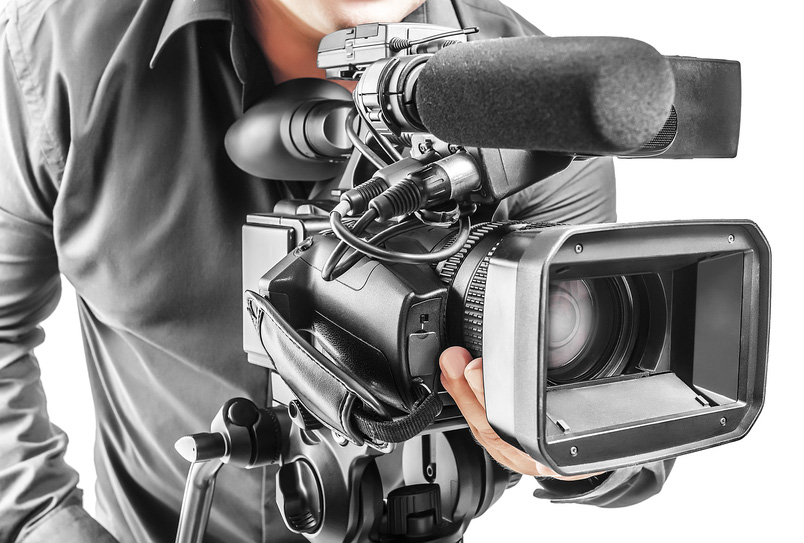The Ultimate Guide to Legal Videography for Lawyer and Legal Teams
Checking Out the Vitality of Lawful Videography: a Comprehensive Understanding Into Its Performance in Protecting Accurate Visual Records for Legal Cases
Lawful videography stands as an important component in the realm of legal procedures, offering as a silent yet effective observer in the quest of justice. As we delve into the capability and importance of lawful videography in the context of legal instances, a profound realization dawns upon the crucial role it plays in forming the training course of justice.
Importance of Lawful Videography
Highlighting the critical duty of lawful videography in modern legal process, its significance depends on its capacity to provide irrefutable aesthetic proof that enhances the presentation of testimonies and truths. By catching real-time occasions, depositions, and witness testimonies in a video style, lawful videography ensures that every nuance, expression, and detail is accurately protected for later evaluation. This aesthetic documents functions as an effective device in court rooms, allowing jurors and judges to better understand the context of a case and make informed decisions based on the presented evidence.
Furthermore, lawful videography adds to boosted transparency and accountability in the lawful system. In essence, the significance of lawful videography lies in its ability to promote the stability of the legal procedure by capturing and maintaining precise visual documents that support the search of justice.
Performance in Legal Documents
Legal videography's duty in contemporary legal procedures extends past offering aesthetic evidence; its capability in legal documents is important for properly protecting the information of statements and occasions. Through the precise recording of depositions, court process, witness testimonies, and criminal activity scene investigations, lawful videography ensures an unfiltered account of occasions that can be revisited and evaluated throughout the legal process. This exact documentation functions as an essential source for courts, legal representatives, and courts to reference details moments, body movement, face expressions, and nuances that may not be completely recorded in composed records alone.
Moreover, lawful videography plays a pivotal role in preserving the honesty of lawful process by reducing the risk of false impression or adjustment of details. The visual records captured with legal videography supply an honest depiction of the facts presented during a case, providing a dependable and detailed source of evidence that can substantially affect the end result of lawful disagreements (Legal Videography). Fundamentally, the functionality of legal videography in legal documentation functions as a foundation in maintaining openness, precision, and justness within the lawful system
Relevance in Visual Proof Conservation
Preserving aesthetic proof via thorough recording strategies is an important element of legal videography. The importance of aesthetic proof conservation can not be overstated in lawful procedures. Visual evidence, such as videos of criminal activity statements, accidents, or scenes, can supply important insight into events that words alone may not fully capture. By properly documenting these visuals, lawful videographers play an important duty in guaranteeing the honesty and credibility of evidence presented in court.
Visual evidence conservation additionally aids in avoiding misconceptions or false impressions that can occur from created or spoken statements. The capability to see and hear events as they took place can substantially impact the end result of an instance. Moreover, visual evidence can work as a powerful tool for both the prosecution and defense in presenting their debates persuasively.
Function in Ensuring Justice
In the search of reasonable and just legal results, the role of legal videography is important. Legal videography plays a critical duty in making certain justice by supplying precise and unbiased visual proof that can substantially affect the outcome of lawful situations. Unlike created files or testimonies, video recordings catch the nuances of body language, face expressions, and intonation, offering an extensive depiction of events as they unfold. This visual evidence is especially valuable in court rooms, where it can assist challenge or substantiate witness statements, strengthen debates, and eventually contribute to the facility of truth and fairness.
Additionally, lawful videography serves as a way of preserving critical moments and details that may be missed out on or misinterpreted in created transcripts (Legal Videography). By documenting scenes, activities, and interactions in real-time, lawful videography helps prevent misstatements here are the findings and makes sure that all parties involved have access to the very same information, advertising openness and liability in the lawful process. Ultimately, the use of lawful videography not just enhances the efficiency of legal procedures however additionally maintains the concepts of justice and equity in the lawful system
Crucial Device for Legal Instances

Verdict
Finally, legal videography plays a vital function in maintaining accurate visual records for lawful situations. Its significance hinges on its functionality in legal documents, importance in visual evidence conservation, and duty in guaranteeing justice. As a vital tool for legal situations, lawful videography acts as a their website valuable source for offering visual proof and contributing to the overall integrity of the legal process.
Lawful videography's role in modern legal process expands past providing visual proof; its performance in lawful paperwork is important for precisely protecting the details of occasions and testimonies. In essence, the functionality of legal videography in legal paperwork serves as a cornerstone in supporting openness, accuracy, and justness within the legal system.
Inevitably, the use of legal videography not only enhances the efficiency of legal procedures yet also maintains the principles of justice and equity in the lawful system.

As an important tool for legal situations, legal videography serves as a beneficial resource for offering aesthetic evidence and contributing to the general stability of the legal procedure.